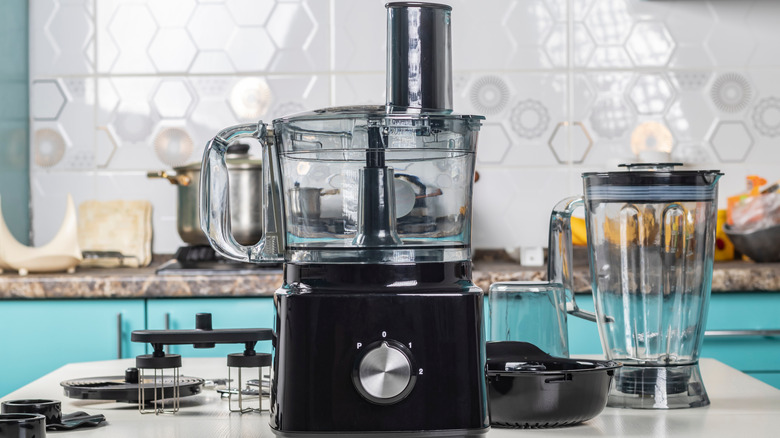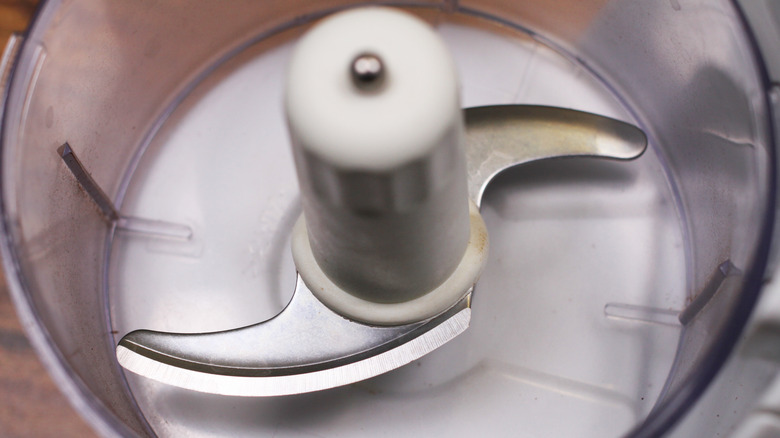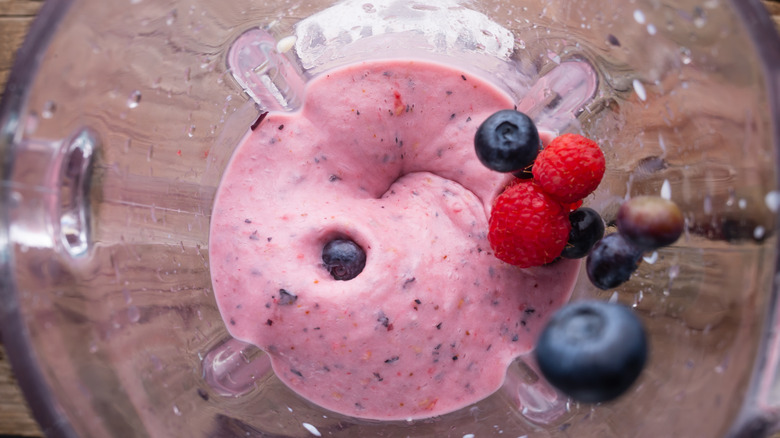Blender Vs. Food Processor: What's The Difference?
If you've ever found yourself wanting to undertake a recipe that calls for a food processor and wondering if your trusty old blender would do the trick, you're not alone. While blenders have held court as a kitchen essential for decades, per Best Buy, that doesn't mean food processors should be passed over as an important culinary tool. But do you really need both taking up valuable kitchen counter or cupboard space? What's the real difference?
While both appliances share the same goal of chopping food up into tiny pieces, there are actually quite a few contrasts between the two. Aside from the obvious price point, design, and Pantone of the year color option variances, the most notable difference lies in the heart of each product — how it preps the food. So, would a blender work instead of a food processor for that recipe in question? Well, it depends on what you're making and which blade and bowl shape is appropriate to achieve your desired outcome.
Blenders and food processors yield different final products
One major difference between the two pieces of equipment is the end result: A blender will give a final product that you'll probably consume with a spoon or straw, according to HowStuffWorks, while KitchenAid explains a food processor is more likely to give you a chunkier result (though the appliance is capable of puréeing if you have a powerful enough machine or are starting off with the correct ingredients).
Food processors come in handy to help you with knife skills and basic cooking techniques — think chopping, slicing, shredding, kneading, and mixing. It's like having an extra set of very skilled hands with you in the kitchen.
A blender is there to help you with texture and consistency — think liquify, purée, smooth, crush, whip, and froth. Blenders work best with recipes that have a considerable amount of liquid in the ingredients. Pat Schweitzer, then consumer test kitchen director at Hamilton Beach, advised Today you should always add the liquid to your blender first, taking care to include enough to cover the blade. This will keep things moving as the motor runs.
Different blades yield different results
Food processors often come with several blades that can be swapped in and out of the bowl. While the S-blade (or sabatier blade) is the standard insert you'll probably use most often to chop, mix, and even purée, the Kitchn suggests becoming familiar with the many other attachments to get the most bang for your buck out of the workhorse appliance. The shredding disc will help you do just that, and the dough and slicing blades live up to their namesakes as well.
Blenders have either a fixed X- or wing-shaped blade that sits at the base of the jar, and its shape affects the result, explains Dine Company. The X-blade is best for emulsifying food items such as soups, sauces, and salad dressings, while the wing-shaped blade is best for drinks as its edges are built for crushing ice — think frozen margaritas and smoothies.
Size and shape has a purpose
The size and shape of each vessel also differ substantially. HowStuffWorks explains the tall, deep container of blenders allows for a vortex to form which aids in liquifying the ingredients while creating that familiar swirl in the center as it processes. While they're commonly found in one standard, larger 48-ounce size, Kitchen Kapers states the demand for smaller smoothies and protein shakes has resulted in an uptick in personal-sized and on-the-go blender options. Those who just want to purée their soups straight in the pot can opt for an immersion blender that's easily slipped into a drawer as well.
The bowl of a food processor is wider and shallower than that of a blender, allowing you to work in large batches. Like blenders, food processors range in size from mini choppers to restaurant grade, so KitchenAid recommends you consider your needs when choosing the right size for you. A home cook who only wants help chopping onions or making hummus can save some counter space and go with the mini, while someone feeding a crowd or slicing vegetables for a dish like ratatouille may want to consider one of the larger options.



